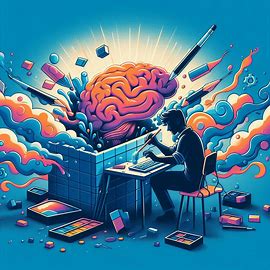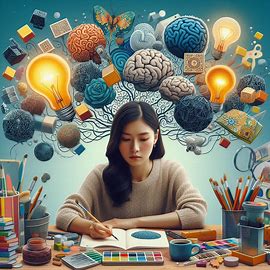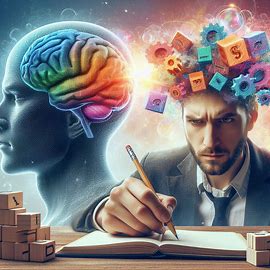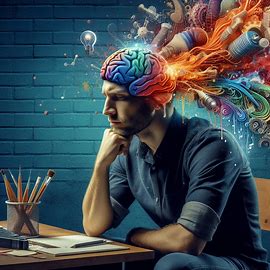Creative blocks can be one of the most frustrating challenges for anyone involved in creative work. Whether you are an artist, writer, musician, or designer, those moments when inspiration seems out of reach can be disheartening. However, insights from neuroscience show that your brain's ability to change, known as neuroplasticity, can help you push through these barriers. By learning how to utilize neuroplasticity, you can form new neural pathways that promote creativity and ease your way past these mental blocks.
Let’s dive into five powerful strategies that can help you harness neuroplasticity and keep your creative energy flowing.
1. Change Your Environment
Changing your surroundings is one of the simplest ways to spark your creativity. Your environment greatly affects your mental state, and introducing variety can lead to fresh ideas.

For instance, if you typically work in a home office, try rearranging your space or setting up in your local library. You could also visit a nearby park or a new café to work. A study from the University of Chicago found that changing your location can enhance cognitive flexibility, making it easier to think creatively. Regularly exploring different environments can lead to significant improvements in your creative thinking.

2. Embrace Mindfulness Meditation

Mindfulness meditation is increasingly recognized for its ability to boost creativity and mental clarity. This technique encourages you to focus on the present moment, allowing your mind to wander freely.
Research shows that just eight weeks of mindfulness meditation can increase the grey matter in the hippocampus by 22%. This area of the brain is vital for memory and creativity. Even setting aside just 10 minutes daily for mindfulness can open your mind to new ideas and alleviate the mental pressure that often contributes to creative blocks.
3. Engage in Brain-Training Activities
Challenging your brain through various training activities is another effective way to utilize neuroplasticity. Engaging in puzzles, writing prompts, or learning a new musical instrument all stimulate your mind and promote growth.

According to a study published in the journal Psychological Science in the Public Interest, activities that require problem-solving or creative thinking can create new neural connections. Plan regular sessions for brain games or explore new hobbies specifically aimed at enhancing your creative thinking. You may be surprised at how these activities can help clear away creative blocks.
4. Experiment with Different Mediums

Experimenting with various mediums can break down creative barriers and lead to new insights. If you usually paint, try your hand at writing a short story; if you are a musician, consider diving into photography or graphic design.
When you explore different creative forms, you discover unique ways to express thoughts and emotions. A study from the University of Kent found that individuals who engage in multiple forms of art report higher levels of creativity. By stepping into unfamiliar creative arenas, you not only stimulate neuroplasticity but also gain a fresh perspective on your primary medium.
5. Prioritize Physical Exercise
Physical exercise positively impacts both mental and physical health. Regular physical activity increases blood flow to the brain, enhancing cognitive function and promoting creativity.
Incorporating activities like yoga, dancing, or even brisk walking into your routine can alleviate stress and elevate your mood. According to a study from the University of Vermont, even a short walk can lead to a 30% increase in creative output. Make exercise a priority, and you may find it easier to tackle your creative projects, turning daunting blocks into manageable tasks.
Final Thoughts
Creative blocks can seem overwhelming, but they are not unbeatable. With the right mindset and techniques, you can manage them and even turn them into opportunities for growth. By tapping into the principles of neuroplasticity, you can transform how you approach your creative work.
As you consider these strategies—changing your environment, practicing mindfulness, engaging in brain-training activities, experimenting with different mediums, and prioritizing physical exercise—remember they are tools to help you along your creative journey.
With persistence, you can reshape the neural pathways in your brain, enabling a more fluid and enjoyable creative process. Try out these methods and watch as your creative blocks begin to melt away, uncovering endless possibilities within you.
FRANCO ARTESEROS...

















Comments